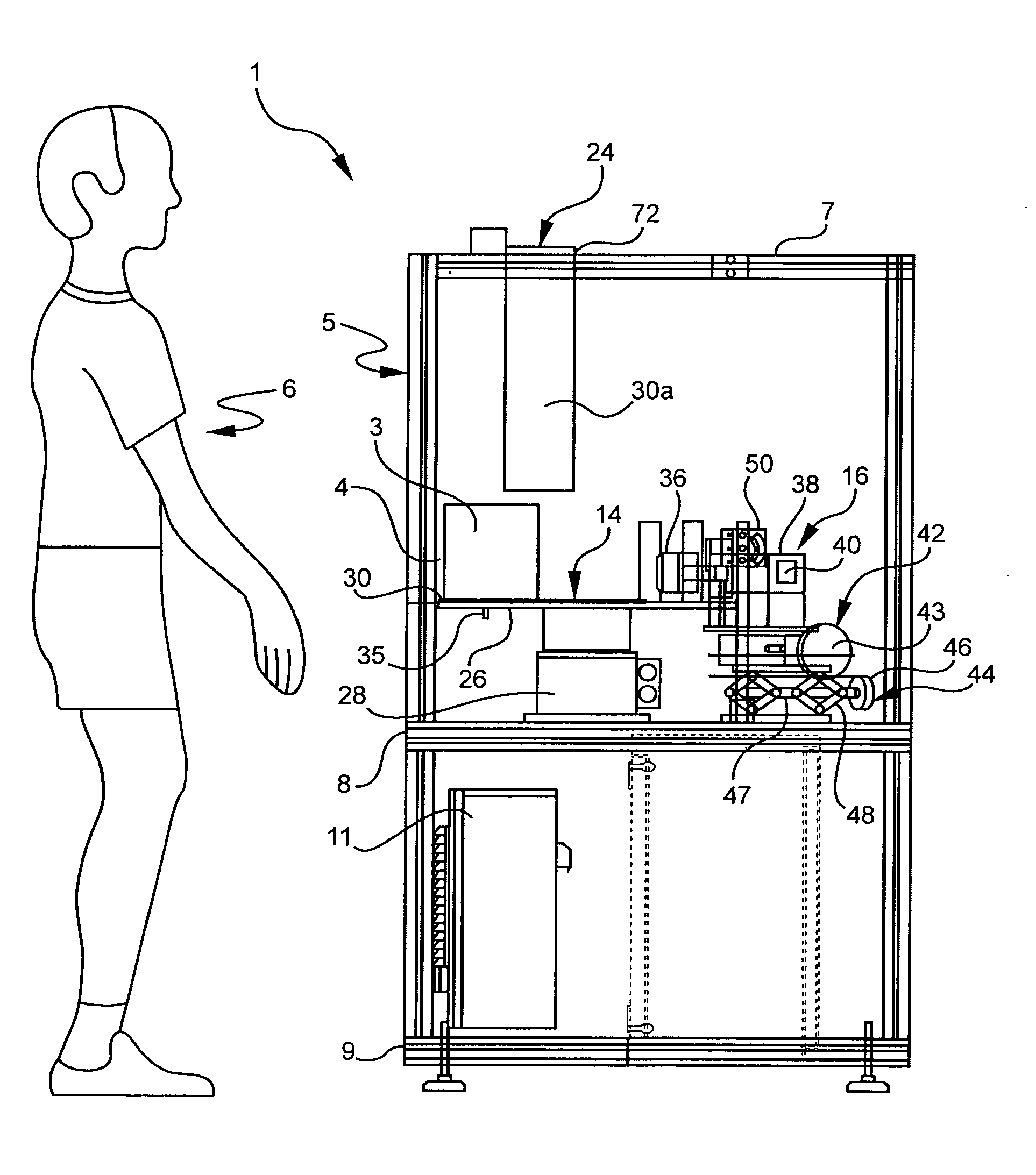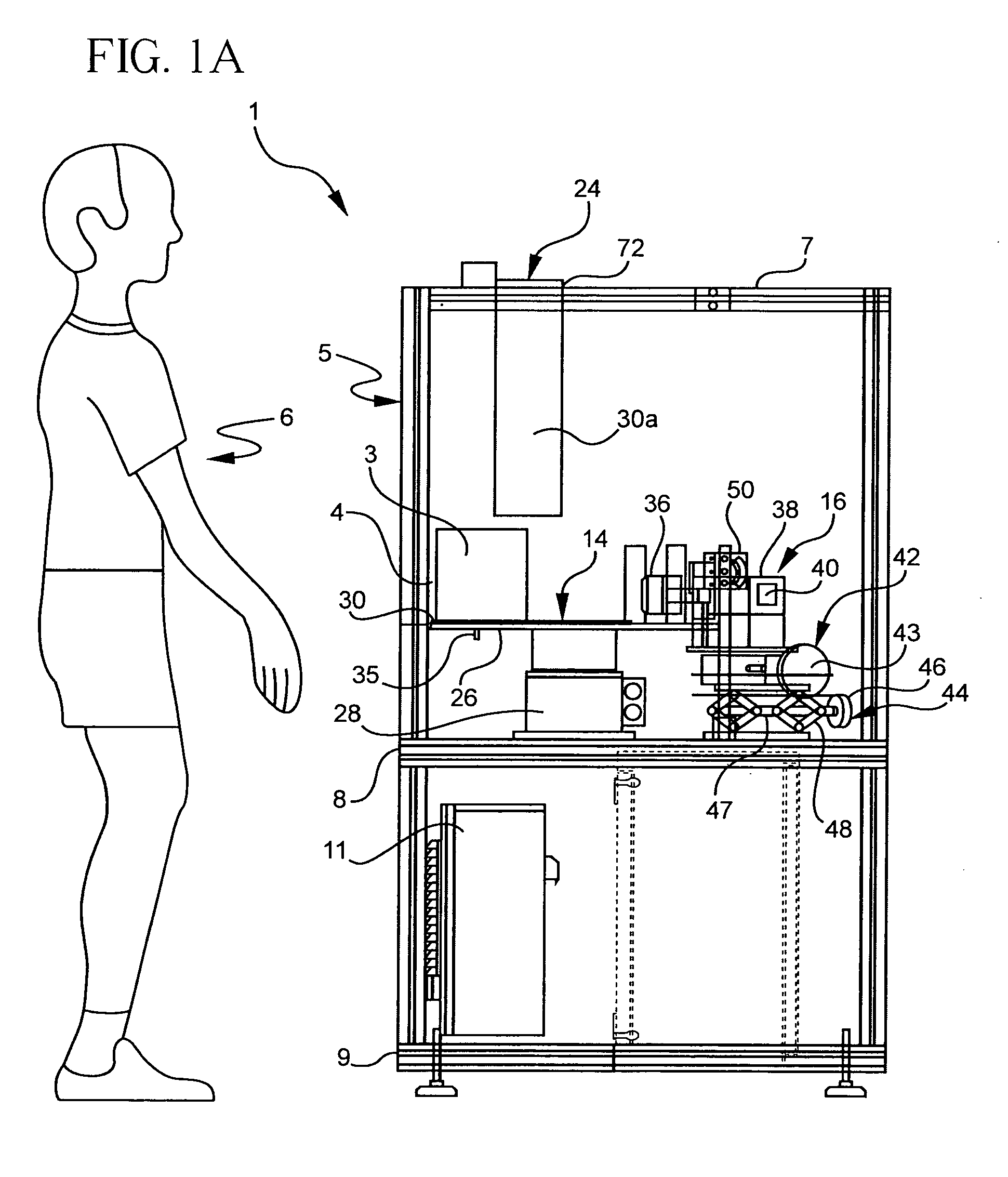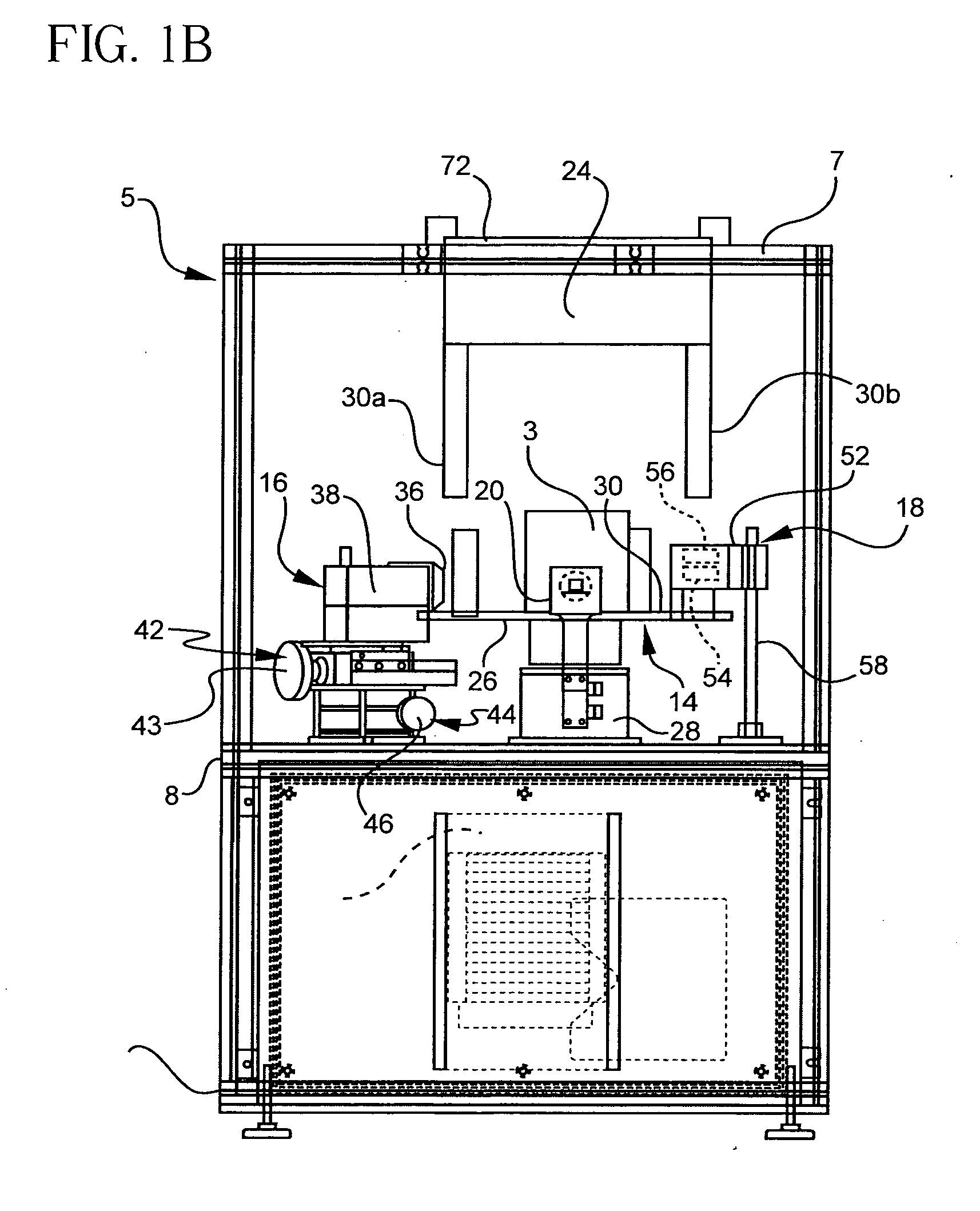Ink for printing data carrying mark on honeycomb structures
a technology of data and honeycomb, applied in the field of ceramic structure marking, can solve problems such as internal cracks and voids, property variations, and separation between the outer skin and the inner matrix of the web, and achieve the effect of avoiding potentially-damaging thermal stresses and facilitating data extraction
- Summary
- Abstract
- Description
- Claims
- Application Information
AI Technical Summary
Benefits of technology
Problems solved by technology
Method used
Image
Examples
Embodiment Construction
[0030]With reference now to FIGS. 1A and 1B, wherein like numerals designate like components throughout all the several figures, the system 1 for marking green body or otherwise unfinished ceramic structure 3 of a ceramic honeycomb structure generally comprises a marking station 5, and a station worker 6 for loading and unloading the green body 3. The marking station 5 includes an upper frame 7, an upper shelf 8, and a lower shelf 9. The lower shelf 9 supports a programmable logic controller 11 which controls the operation of the various components mounted on the upper shelf 8. The upper shelf 8 supports a moving assembly 14, a printer 16 for printing a data-carrying mark on the green body 3, an optical reader 18 for reading and determining the overall equality of the printed mark, a dryer 20 for drying the ink that forms the mark, and a bar code removing assembly 22 (shown in FIGS. 2-5) for removing and covering defectively-printed marks from the green body 3. Each of these princip...
PUM
| Property | Measurement | Unit |
|---|---|---|
| Diameter | aaaaa | aaaaa |
| Diameter | aaaaa | aaaaa |
| Fraction | aaaaa | aaaaa |
Abstract
Description
Claims
Application Information
 Login to View More
Login to View More - R&D
- Intellectual Property
- Life Sciences
- Materials
- Tech Scout
- Unparalleled Data Quality
- Higher Quality Content
- 60% Fewer Hallucinations
Browse by: Latest US Patents, China's latest patents, Technical Efficacy Thesaurus, Application Domain, Technology Topic, Popular Technical Reports.
© 2025 PatSnap. All rights reserved.Legal|Privacy policy|Modern Slavery Act Transparency Statement|Sitemap|About US| Contact US: help@patsnap.com



